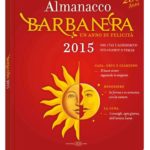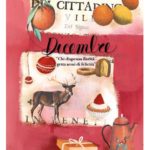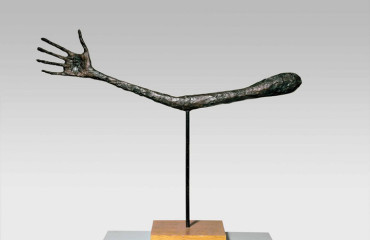
by Amélie Giannotta
We studied at school, too young, we did not understand the scope. But that seller of almanacs that tried to convince the traveller to purchase his almanac, in the famous Operetta Morale by Leopardi of 1832, he would have been lucky if under the arm he had had the Barbanera. Nowadays, in Spello, the time has not passed and follows the rhythms of the monk astronomer who gave his name to the calendar, since 1762. We are in his places – the foundation surrounded by the green, the Editoriale Campi that publishes it and preserves the old and fine editions, the orchard and the garden with crops grown as once upon a time – during which the monk from Foligno retreated to gather the necessary energy to predict.
The tools were provided to him by the science that he questioned, the compass, the telescope, the map coeli, books, an eye to the sky in the act of measurement. Among the goals that led his reflection, and the common thread of all his thought over the centuries, it was a healthier relationship with the Earth. Over a century ago, back when no one would have imagined! An environmentalist by vocation, which makes credible its pages today, when the need for a new ethic of the relationship between man and environment filled the pages of his almanac, with tips for everyday healthful harmony, awareness, sustainability. The 2015 edition of the longest yearbook of Italy, arrived at No. 253, it is a “good living” classic that is experiencing great success with a increasingly diverse target of readership, even more marked for the attention reserved for its issues of environmental sustainability and biodiversity that are interwoven with green interviews, home recipes with seasonal products and flavors and monthly tips about orchard and garden, natural health and beauty.
From this year, the Almanac has a focus on food and on a new ethics of nutrition to be discovered, with the voices of authoritative experts in nature, agriculture, sustainability, young farmers, scientists and philosophers. Among these, Massimo Montanari (historical supply), Stefano Mancuso (botanical, neurobiologist vegetable), Giuseppe Barbera (agronomist scholar of biodiversity landscape), Consolata Beraudo Pralormo (art historian), Oliviero Olivieri (President Sibillini National Park) Salvatore Ceccarelli (agronomist scholar of biodiversity), Gianumberto Accinelli (entomologist), Federica Ferrario (responsible sustainable agriculture campaign Greenpeace Italy), Mattia Matrone (young farmer), Antonio Barletta (creator Project Urbees), Vandana Shiva (environmentalist philosopher), Palmira Stella (gardener).
There are many readers who have dedicated dedications or correspondence to Barbanera. Among them, Federico Fellini, Giuseppe Piermarini or Gabriele D’Annunzio. It was the poet to define the Barbanera “the book where is gathered the flower of the times and the wisdom of nations”.
For the images we thanks the archives of the Barbanera Foundation
Official website
 English
English  Italiano
Italiano 





